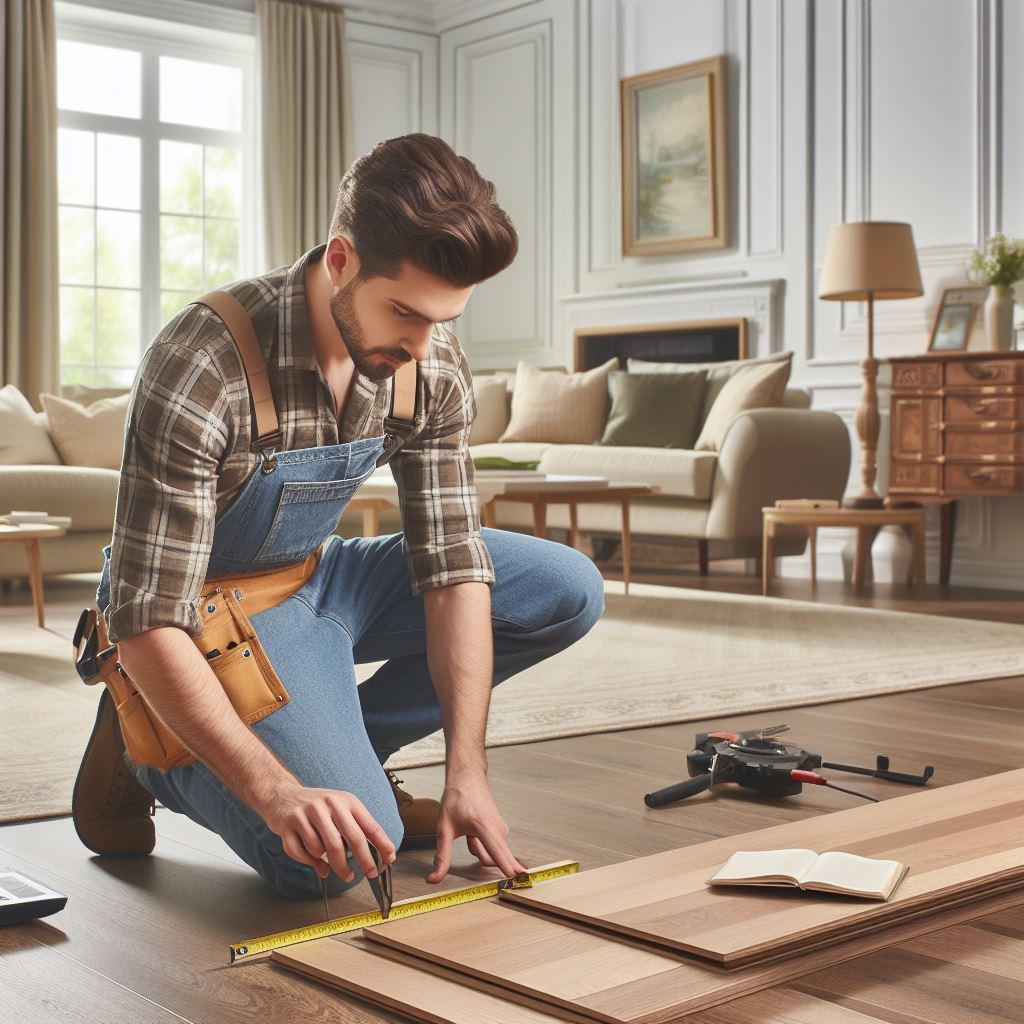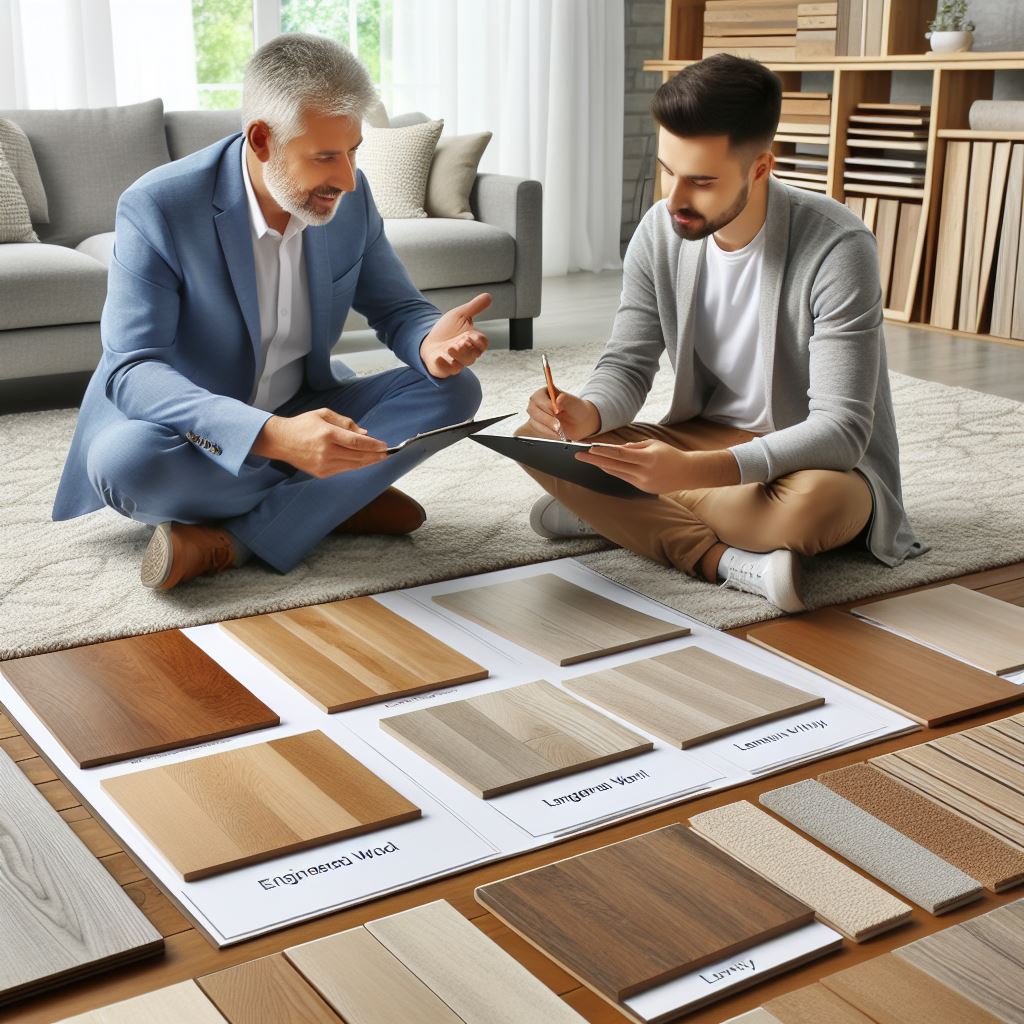When it comes to optimizing your home for comfort and energy efficiency, radiant heat systems are a game-changer. However, choosing the right flooring to complement these systems is crucial. That's where engineered wood flooring comes into play.
Engineered wood flooring is specifically designed to withstand the challenges posed by radiant heat systems. Unlike traditional hardwood, which can expand and contract with temperature fluctuations, engineered wood is more stable. This stability is achieved through a multi-layer construction, combining a hardwood veneer on top with layers of plywood or high-density fiberboard underneath. This construction not only makes it more resistant to changes in temperature and humidity but also allows it to efficiently conduct heat.
In addition to its practical benefits, engineered wood flooring offers a wide range of aesthetic options. From classic oak to exotic teak, you can find a variety of finishes and styles to match your decor. This flexibility makes it an excellent choice for homeowners who want both beauty and functionality.
Are you considering engineered wood flooring for your radiant heat system? Request a free estimate or email us at sales@paradise-spaces.com to get started on your project today!
Benefits of Engineered Wood Flooring with Radiant Heat

Engineered wood flooring is an ideal choice for homes with radiant heat systems due to its unique benefits. One of the most significant advantages is its dimensional stability. Unlike solid hardwood, which can warp, cup, or gap when exposed to varying temperatures, engineered wood maintains its shape and integrity. This makes it particularly well-suited for the consistent warmth of radiant heat systems.
Another benefit is the efficient heat transfer properties of engineered wood. The multi-layered structure allows heat to pass through and spread evenly, ensuring a warm and comfortable surface underfoot. This can lead to better energy efficiency, potentially lowering your heating costs over time.
Engineered wood is also less prone to moisture damage compared to solid hardwood. The layers of plywood or high-density fiberboard used in its construction provide additional resistance to moisture, making it a more durable option in environments where radiant heat is used.
Aesthetically, engineered wood flooring offers the same natural beauty as solid hardwood. Available in a wide array of finishes, colors, and textures, it allows homeowners to achieve the look they desire without compromising on performance. Whether you prefer the traditional elegance of oak or the modern appeal of maple, there's an engineered wood option to suit your style.
Lastly, engineered wood is generally easier to install than solid hardwood, especially over radiant heat systems. The tongue-and-groove or click-lock installation methods reduce the time and labor required, making it a more convenient choice for both DIY enthusiasts and professional installers.
Top Engineered Wood Flooring Picks for Radiant Heat
When it comes to selecting the best engineered wood flooring for radiant heat, several top-performing products stand out. These options not only offer excellent heat conductivity but also maintain their aesthetic appeal and durability under the warmth of radiant heat systems.
1. Shaw Epic Plus Hardwood
Shaw's Epic Plus Hardwood series is a top pick for radiant heat applications. Known for its exceptional stability and beautiful finishes, this engineered wood is designed to handle temperature fluctuations effectively. With a variety of species and styles available, it caters to diverse interior design preferences.
2. Mohawk TecWood Flooring
Another excellent choice is Mohawk's TecWood line. This product offers a perfect blend of style and performance, featuring a multi-layer construction that enhances stability and heat conductivity. TecWood is available in numerous finishes and textures, ensuring a match for any decor.
3. Armstrong TimberBrushed Engineered Hardwood
Armstrong's TimberBrushed series is renowned for its unique textures and durable construction. This engineered wood flooring is designed to work seamlessly with radiant heat systems, providing consistent warmth and comfort. Its distinctive brushed surface adds a touch of rustic charm to any room.
4. Mannington Engineered Hardwood
Mannington offers a range of engineered hardwood flooring options that are ideal for radiant heat. Known for their superior craftsmanship and innovative designs, Mannington's products ensure excellent heat distribution and long-lasting beauty. The company's commitment to sustainability is an added bonus for eco-conscious homeowners.
5. Kährs Artisan Collection
The Kährs Artisan Collection features high-quality engineered wood that performs exceptionally well with radiant heat. This collection is characterized by its rich textures and natural finishes, providing a luxurious look and feel. Kährs' advanced manufacturing techniques ensure that their flooring remains stable and beautiful under varying temperatures.
These top picks for engineered wood flooring are not only compatible with radiant heat systems but also offer a combination of durability, aesthetic appeal, and ease of installation. Choosing any of these options will ensure a warm, stylish, and long-lasting flooring solution for your home.
Factors to Consider When Choosing Engineered Wood Flooring

When selecting the best engineered wood flooring for radiant heat, it's essential to consider several key factors to ensure optimal performance and longevity. Here are some crucial aspects to keep in mind:
1. Thickness and Construction
The thickness of the engineered wood planks plays a significant role in their performance with radiant heat systems. Thicker planks tend to provide better insulation and stability. Additionally, the multi-layer construction of engineered wood should be robust enough to withstand temperature fluctuations without warping or cracking.
2. Wood Species and Finish
Different wood species have varying levels of hardness, density, and thermal conductivity. Hardwoods like oak, maple, and hickory are excellent choices for radiant heat applications due to their durability and heat conduction properties. The finish of the flooring also impacts its heat resistance and aesthetic appeal. Opt for finishes that enhance the natural beauty of the wood while providing adequate protection.
3. Installation Method
The installation method can affect the efficiency of your radiant heat system. Floating floors, glue-down, and nail-down installations each have their pros and cons. Floating floors are easy to install and allow for slight movement, while glue-down and nail-down methods offer a more permanent and stable solution. Consult with a professional to determine the best installation method for your specific needs.
4. Warranty and Certifications
Check the warranty and certifications of the engineered wood flooring before making a purchase. A comprehensive warranty indicates the manufacturer's confidence in their product's durability and performance. Certifications such as FloorScore or GREENGUARD ensure that the flooring meets stringent environmental and health standards.
5. Compatibility with Radiant Heat Systems
Not all engineered wood flooring is compatible with radiant heat systems. It's crucial to select products specifically designed for use with these systems. Look for manufacturers who provide clear guidelines and recommendations for their flooring products' use with radiant heat.
By considering these factors, you can make an informed decision and choose the best engineered wood flooring that not only enhances your home's aesthetic appeal but also performs efficiently with your radiant heat system.
Installation Tips for Radiant Heat and Engineered Wood

Installing engineered wood flooring over radiant heat systems requires careful planning and attention to detail. Here are some essential installation tips to ensure a seamless and efficient setup:
1. Acclimate the Wood
Before installation, allow the engineered wood planks to acclimate to the room's temperature and humidity for at least 48-72 hours. This helps prevent expansion or contraction after installation. Lay the boxes flat in the room where they will be installed and keep them away from direct heat sources.
2. Test the Radiant Heat System
Ensure that your radiant heat system is functioning correctly before laying down the flooring. Turn on the system and run it at the desired temperature for a few days to stabilize the subfloor's temperature and identify any potential issues. This step helps to avoid complications during and after the installation process.
3. Use a Suitable Underlayment
Choose an underlayment specifically designed for use with radiant heat systems. The underlayment should provide thermal conductivity while offering sound insulation and moisture protection. This layer is crucial for maintaining the efficiency and longevity of both your flooring and the radiant heat system.
4. Follow Manufacturer Guidelines
Always adhere to the manufacturer's installation instructions and guidelines. These recommendations are tailored to ensure the best performance of their specific products. Disregarding these guidelines can void warranties and lead to issues with your flooring.
5. Maintain Consistent Temperatures
Avoid sudden temperature changes, as they can stress the wood and cause warping or gaps. Gradually adjust the thermostat to allow the engineered wood to adapt. Maintain a consistent temperature within the recommended range provided by the flooring manufacturer.
6. Leave Expansion Gaps
Engineered wood flooring needs space to expand and contract with temperature changes. Leave appropriate expansion gaps around the perimeter of the room and around fixed objects. These gaps can be covered with baseboards or trim to maintain a clean look.
7. Monitor Humidity Levels
Maintaining optimal humidity levels (between 30-50%) in your home is essential for the longevity of your engineered wood flooring. Use humidifiers or dehumidifiers as needed to keep the indoor environment stable.
By following these installation tips, you can ensure that your engineered wood flooring performs efficiently and remains beautiful for years to come, even with radiant heat systems.
Maintenance and Care for Engineered Wood Flooring with Radiant Heat

Maintaining and caring for engineered wood flooring installed over radiant heat requires some specific steps to ensure longevity and performance. Here are some essential tips to keep your floors looking pristine:
1. Regular Cleaning
Dust and dirt can act like sandpaper on the surface of your wood flooring, causing scratches. Regularly sweep or vacuum using a soft-bristle attachment to remove debris. Additionally, use a damp (not wet) mop with a wood floor cleaner that's suitable for engineered wood to maintain its shine and cleanliness.
2. Protect from Moisture
Excess moisture is the enemy of wood flooring. Immediately clean up spills to prevent water damage. Use area rugs in high-traffic areas and near entrances to catch water and dirt. Make sure that any rugs or mats have a non-abrasive backing to avoid scratching the floor.
3. Monitor Humidity Levels
Fluctuating humidity can cause wood to expand and contract. Maintain indoor humidity levels between 30-50% using humidifiers or dehumidifiers as necessary. This is particularly important in homes with radiant heat systems, as they can affect indoor humidity.
4. Use Furniture Pads
Place felt pads under the legs of furniture to prevent scratches and dents. Avoid dragging heavy furniture across the floor; instead, lift and move them to protect the wood surface.
5. Avoid Abrasive Cleaners
Do not use harsh chemicals or abrasive scrubbers on engineered wood flooring. Stick to cleaners designed specifically for wood floors to maintain the finish and avoid damage.
6. Check the Radiant Heat System
Regularly inspect your radiant heat system to ensure it’s functioning correctly. Any issues with the system can directly affect the flooring. Gradually adjust temperatures to avoid stressing the wood and causing warping or gaps.
7. Refinishing
Engineered wood flooring can be refinished, but it’s typically limited to one or two times, depending on the thickness of the top veneer. Consult with a flooring professional to determine the best approach for refinishing while preserving the integrity of the floor.
By following these maintenance and care tips, you can enjoy the beauty and durability of your engineered wood flooring for many years, even with the use of radiant heat.
Interested in upgrading your home with the best engineered wood flooring for radiant heat? Request a free estimate or email us at sales@paradise-spaces.com to get started today!
